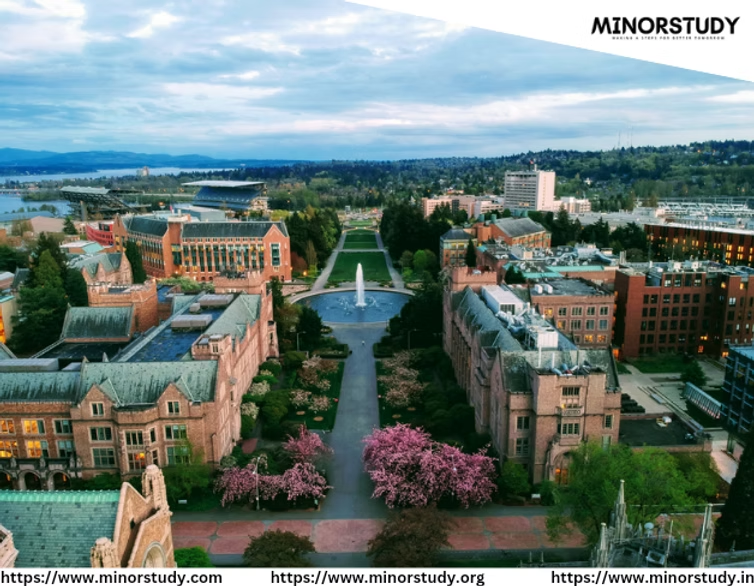🏥 Introduction: A Legacy That Transforms Lives
Washington University School of Medicine: In the world of medical education, few institutions shine as brightly and consistently as the Washington University School of Medicine (WUSM) in St. Louis, Missouri. For over a century, this institution has not only been at the forefront of medical breakthroughs but also deeply compassionate healthcare.
- 📚 History of Washington University School of Medicine
- 📊 7 Fascinating Facts About Washington University School of Medicine
- 🕰️ Timeline of Transformation
- 🎓 Academic Offerings and Global Influence
- 🌟 Significance in Today’s World
- 🧡 Daily Life Impact – Why It Matters to All of Us
- 🎊 Celebrations, Observances & Events
- 💬 Heartfelt Wishing Message
- ❓ FAQs – Frequently Asked Questions
- Q1: Where is Washington University School of Medicine located?
- Q2: Is WUSM a private or public institution?
- Q3: What are its medical specialties?
- Q4: Is it hard to get into WUSM?
- Q5: What is the NEET equivalent requirement for Indian students?
- Q6: Does WUSM offer scholarships?
- 📌 Important Points to Remember
- 🧭 Final Thoughts: A School with a Soul
With its commitment to research, education, and service, WUSM doesn’t just create doctors — it cultivates healers, pioneers, and change-makers. This article explores the history, milestones, impact, and human side of this remarkable medical school in a narrative style designed for everyone — not just academicians.
📚 History of Washington University School of Medicine
The roots of WUSM trace back to 1891, when Washington University in St. Louis incorporated a medical department into its structure. But its real transformation began in the early 20th century, thanks to the Flexner Report of 1910, which revolutionized American medical education and challenged the university to aim higher.
Under the leadership of Dr. William H. Welch and with support from Rockefeller Foundation, WUSM was restructured into a premier center of clinical excellence and biomedical research.
📜 Major Historical Milestones:
1891: Medical Department formally established.
1910: Flexner Report transforms curriculum; leads to greater research focus.
1914–1918: Played a critical role during WWI by supplying physicians.
1950s–70s: Breakthroughs in genetics, cancer biology, and radiology.
2003: Genome sequencing collaboration with Human Genome Project.
2023: Ranked consistently in the top 10 medical schools in the U.S.
From its early beginnings to its current status as a global research powerhouse, WUSM has always walked the fine line between cutting-edge science and compassionate service.
📊 7 Fascinating Facts About Washington University School of Medicine
🧬 Genetic Discoveries: WUSM played a key role in the Human Genome Project, decoding the mysteries of DNA.
🧠 Home of Nobel Laureates: Over 18 Nobel Prize winners have been affiliated with WUSM, including Dr. Carl Cori and Dr. Gerty Cori for their work in carbohydrate metabolism.
🌍 Top 10 Rankings: Regularly ranked in the top 10 by U.S. News & World Report for research, primary care, and specialties.
🩺 Massive Research Grants: Receives over $800 million annually in NIH and private research funding.
🧑🤝🧑 Diversity of Care: Serves one of the most diverse patient populations in the Midwest through Barnes-Jewish and St. Louis Children’s Hospitals.
🧪 Firsts in Medicine: Developed one of the earliest PET scans, and was among the first to introduce gene therapy protocols.
💓 Human-Centered Curriculum: The Gateway Curriculum (launched in 2020) focuses on empathy, ethics, and equity in addition to clinical excellence.
🕰️ Timeline of Transformation
| Year | Event |
|---|---|
| 1891 | Medical Department established |
| 1910 | Flexner Report overhaul |
| 1947 | Nobel Prize awarded to Cori couple |
| 2000 | Major contributor to Human Genome Project |
| 2010 | Major expansion in bioinformatics and oncology |
| 2020 | Launch of Gateway Curriculum |
| 2023 | Ranked among Top 10 U.S. medical schools |
🎓 Academic Offerings and Global Influence
Washington University School of Medicine offers:
MD Programs
MD/PhD dual degrees
MS in Genetic Counseling
Doctor of Physical Therapy
PhD in Biomedical Sciences
Postdoctoral and Continuing Medical Education (CME)
Their Gateway Curriculum is modern, integrating equity, community health, data literacy, and interprofessional collaboration, making their students more empathetic and effective clinicians.
🌟 Significance in Today’s World
🧬 In Science:
Discoveries at WUSM have contributed to genetic therapies, Alzheimer’s treatment, cancer immunotherapy, and pediatric medicine.
Their faculty publish in Nature, Cell, and The Lancet, guiding global research directions.
🏥 In Public Health:
WUSM leads initiatives in opioid crisis interventions, COVID-19 vaccine research, and urban healthcare delivery.
Runs community clinics and supports public health policy formation in Missouri and beyond.
🌱 In Human Development:
Trains doctors who go on to serve underserved communities around the world.
Promotes ethical patient care, mental health advocacy, and inclusive healthcare access.
🧡 Daily Life Impact – Why It Matters to All of Us
Even if you’ve never set foot in Missouri, WUSM has probably touched your life:
From the COVID-19 variants tracked by their labs,
To medicines and diagnostics you or your family might be using,
To doctors trained at WUSM working in your local hospitals—
Washington University School of Medicine extends far beyond its classrooms and labs.
Its research has shaped:
Treatments for heart disease, diabetes, and psychiatric disorders.
Protocols for organ transplants, especially liver and kidney.
Guidelines for elderly and end-of-life care.
🎊 Celebrations, Observances & Events
WUSM is not all books and labs — it’s a vibrant community that celebrates:
Match Day (March): Emotional and exciting day for students receiving residency placements.
Commencement Week (May): Filled with lectures, awards, and graduation ceremonies.
Medical Education Day: Focus on improving student-teacher collaboration.
Diversity & Inclusion Week: Recognizes the richness of its multicultural student body.
💬 Heartfelt Wishing Message
“Wishing all the students, faculty, alumni, and patients of Washington University School of Medicine continued growth, discovery, and healing. May your journey in medicine forever inspire hope, compassion, and transformation.”
❓ FAQs – Frequently Asked Questions
Q1: Where is Washington University School of Medicine located?
It is in St. Louis, Missouri, part of Washington University in St. Louis.
Q2: Is WUSM a private or public institution?
It is a private medical school but receives substantial federal and state research grants.
Q3: What are its medical specialties?
Top-ranked in internal medicine, pediatrics, surgery, oncology, genetics, and radiology.
Q4: Is it hard to get into WUSM?
Yes. It is highly competitive with an acceptance rate around 8% or less.
Q5: What is the NEET equivalent requirement for Indian students?
For international students, high MCAT scores and excellent academics are required; NEET is not applicable unless transferring after admission.
Q6: Does WUSM offer scholarships?
Yes, it offers need-based aid, full-tuition scholarships, and fellowships to international and U.S. students.
📌 Important Points to Remember
Founded in 1891; transformed after 1910 Flexner reforms.
Known for research breakthroughs, clinical training, and humanistic approach.
Affiliated with top hospitals like Barnes-Jewish and St. Louis Children’s Hospital.
Over $800 million annually in research funding.
Human Genome Project collaborator.
Global alumni network in over 70 countries.
🧭 Final Thoughts: A School with a Soul
Washington University School of Medicine is not just a center of academic prestige — it’s a place where life-saving ideas are born, where the next generation of global doctors is nurtured, and where research meets humanity.
Whether you’re an aspiring student, a patient, a parent, or simply a citizen of the world, WUSM’s work impacts you directly or indirectly every day. It redefines what it means to be a medical school in the 21st century — not just by knowledge, but by courage, care, and conscience.









“I started taking Nitric Boost Ultra mainly for better circulation during workouts, but I was surprised at how much more energized I felt overall. My recovery time is shorter and I don’t crash in the afternoons like I used to.”